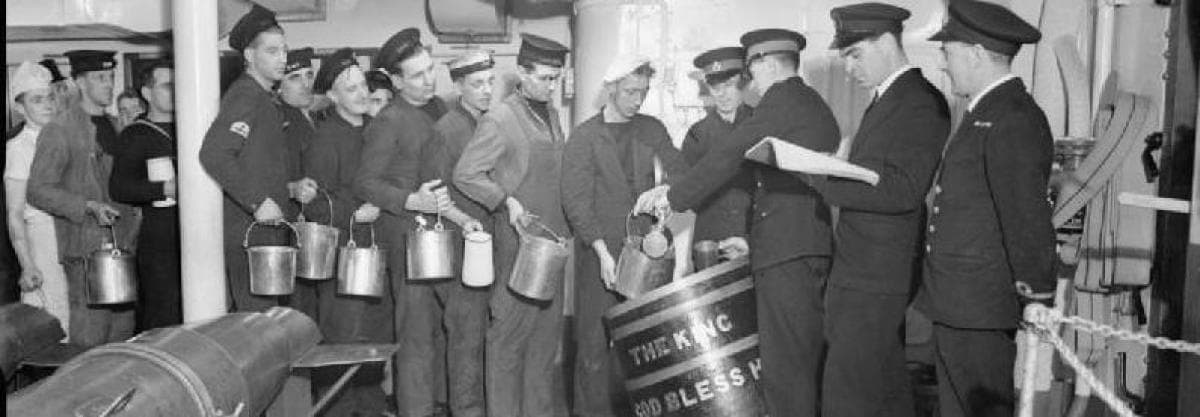
The History of Grog
The History of Grog
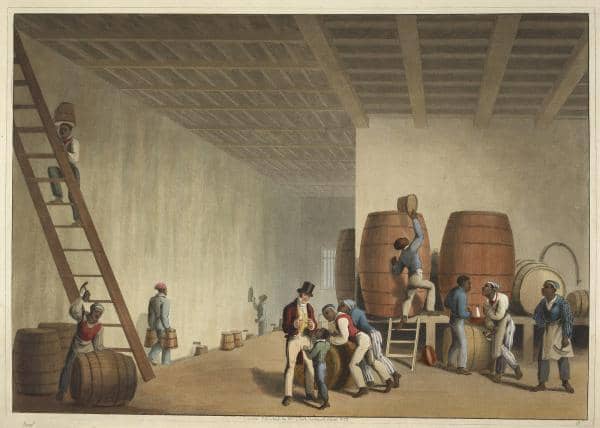
A rum distillery in Antigua. Way cleaner than it actually was.
The story of grog starts with William Penn. Not the one who founded Pennsylvania. His dad. Vice Admiral William Penn Sr. captured Jamaica in 1655, which was arguably a better move: it brought us rum.
REPLACING SAILOR'S RATIONS WITH RUM
Before rum, sailors would cut their putrid water with beer or wine to improve the flavor. And because, you know, alcohol kills germs. With these two nowhere to be found on the island, Penn replaced the sailor’s rations with rum. It was damn strong, which meant it didn’t spoil - another bonus. From the rum ration, it wasn’t too long before grog was born. Barrel-strength rum is a hell of a lot stronger than beer, so that pint ration could turn the ship into a 2AM barroom real quick. Plus, the stuff being made at the time was not exactly sippable.
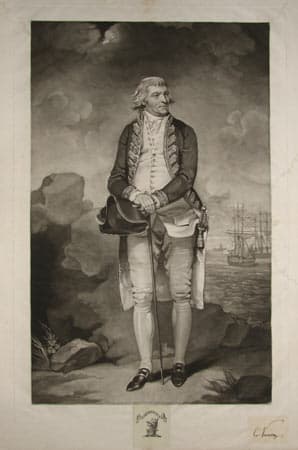
Vice Admiral Edward Vernon, AKA Old Grog.
ADDING SUGAR AND LIME
Vice Admiral Edward Vernon solved both of those problems, with grog. He decreed that the ration would be doled out cut with water, and sailors could add sugar and lime to make the stuff more palatable. No more “what to do with the drunken sailor,” no more scurvy, and a pretty damn good cocktail.
WHY GROG?
Why grog? Vice Admiral Vernon was a badass: not only respected for his valor in battle, but as an advocate for his fellow sailors. He was called Old Grog for the waterproof cloak he wore, made from grogram: a heavy silk/mohair/wool blend.
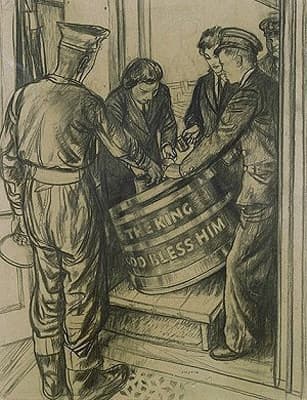
“The daily allowance of half a pint a man is to be mixed with a quart of water, to be mixed in one Scuttled Butt kept for that purpose, and to be done upon Deck, and in the presence of the Lieutenant of the Watch, who is to see that the men are not defrauded of their allowance of Rum.”
– Admiral Nelson’s Official Order
Grog spread quickly throughout the Royal Navy. Though no one recipe was the standard, everybody drank some version. You could express your preference in a very seafaring kind of way with the points of the compass: where N is rum and W is pure water, a Northwester is 50/50. Drink a couple of those and you may no longer be able to find your way back to the cabin.
PIRATES DIDN'T DRINK GROG!
Despite what one might think, pirates didn’t drink grog — unwilling to be associated with the drink of the British seamen, their usual was something called Bumbo: rum, water, and sugar, but with a bit of nutmeg instead of lime.
American sailors didn’t stay with it either. After the Revolutionary War, they subbed US-made rye for Jamaican rum — a more patriotic version of the cocktail, which they called a “Bob Smith”.
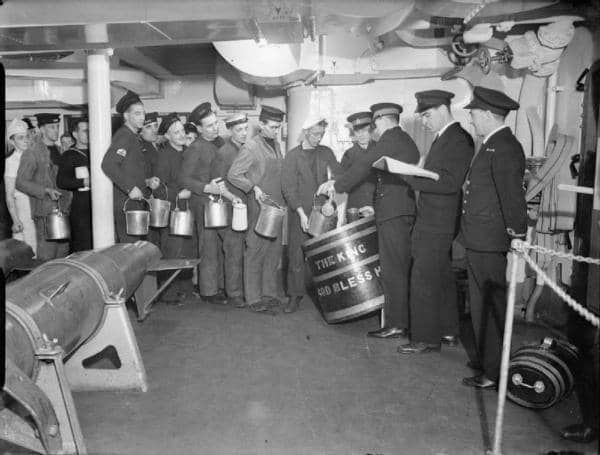
Lining up for grog after the call of “Up Spirits!” on the HMS King George, 1940
THE GREAT RUM DEBATE
The Royal Navy, however, kept the rum ration through 1970. “The Great Rum Debate” broke out in Parliament that January, and on July 30th, the last pipe of “Up Spirits!” rang out among the crew: a day known as “Black Tot Day.” The spirit of grog lives on. We call those Brits “limeys” because of grog. Australians and New Zealanders use “grog” as slang for practically any booze. Irishmen use it as shorthand for their vices — “All for me grog!” Cheers to Admiral Vernon, Old Grog, for taking rum worldwide.
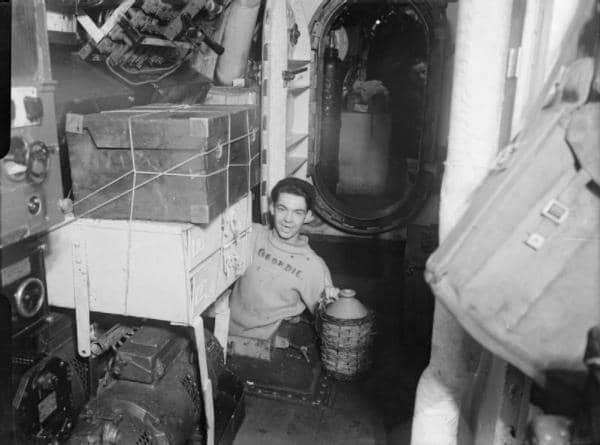
Geordie’s got the grog.
"2 parts Sailor Jerry Spiced rum
1/2 part fresh lime juice
1 teaspoon brown sugar
4 parts hot water
1 cinnamon stick
1 slice orange
Mix all the ingredients in a mug and garnish with a cinnamon stick and a slice of orange."
Caroline Mills reads, writes and drinks in Philadelphia. You can follow her at @carolinemills.[Images via Wikimedia Commons]
